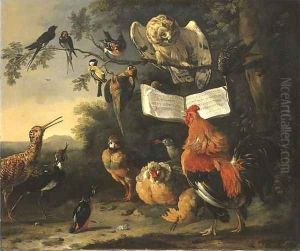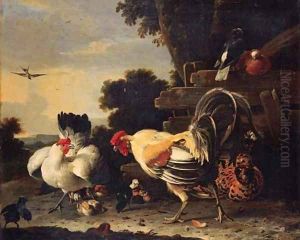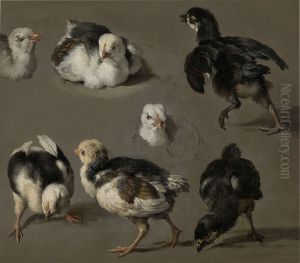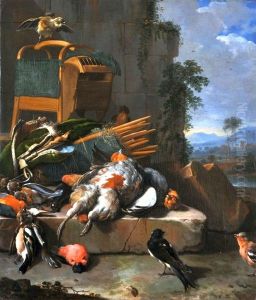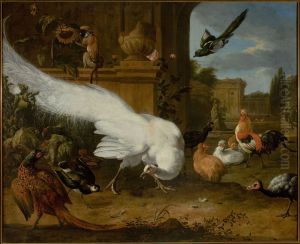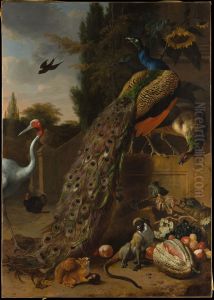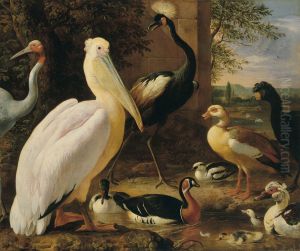Melchior D'Hondecoeter Paintings
Melchior d'Hondecoeter, born in Utrecht, Netherlands, in 1636, emerged as one of the most distinguished Dutch Golden Age painters, renowned for his masterful bird and animal paintings. His works, characterized by their meticulous detail, vibrant energy, and the sophisticated use of color, have captivated art enthusiasts for centuries. Coming from a family steeped in artistic tradition—his father, Gijsbert d'Hondecoeter, and his uncle, Jan Baptist Weenix, were both accomplished painters—Melchior was well-positioned to inherit and refine a rich legacy of artistic skill and vision.
D'Hondecoeter specialized in depicting birds of all feathers—ranging from domestic fowl to exotic species—often set against the backdrop of lush, aristocratic gardens or somber, atmospheric landscapes. His paintings not only exhibit an extraordinary lifelike quality but also reflect a keen observation of nature and an unparalleled ability to capture the essence of his avian subjects. This unique talent established him as the preeminent painter of bird scenes in the Netherlands, leading to commissions from the highest echelons of Dutch society, including members of the House of Orange.
Throughout his career, d'Hondecoeter's work demonstrated a profound understanding of the interactions between light, color, and form. His compositions, while intricate, never felt overcrowded; each element was carefully placed to contribute to a harmonious whole. One of his most famous works, "The Menagerie," illustrates this balance perfectly, showcasing a variety of birds in a dynamic, yet serene garden setting.
Melchior d'Hondecoeter's contributions to the Dutch Golden Age of painting were not limited to his exquisite bird and animal scenes. He also played a significant role in the development of still life and landscape painting, influencing subsequent generations of artists. His legacy, preserved in the collections of major museums around the world, continues to be celebrated for its artistic excellence and its unique window into the natural world of the 17th century. D'Hondecoeter passed away in Amsterdam in 1695, leaving behind a body of work that remains a testament to his enduring talent and vision.



